Departments
-

Using Hot-Fill-Hold: A Thermal Preservation Process. Processors of acidified foods are required to comply with federal, state, and local regulations (when applicable) for thermal processing to ensure the safety and shelf-stability of their products. The hot-fill-hold (HFH) process is a thermal processing technique used to inactivate pathogens and extend the shelf life of acidified products. Heating before filling allows for commercial sterilization of the product, and then filling the container with the hot product will sterilize the clean container.
Kaitlyn Casulli
|
-

When processing acidified foods, the hot-fill-hold process involves heating the product to around 180–200 °F, then filling, inverting, and holding for 2–5 minutes to achieve commercial sterility. Higher temperatures will generally correlate with shorter hold times, and lower temperatures will generally correlate with longer hold times.
Kaitlyn Casulli
|
-

The walnut caterpillar is native to North America and is mostly distributed in the eastern part of the United States. The larvae feed on the leaves of the plants such as pecan, walnut, butternut, and other species of hickory. Although it is an occasional insect pest, it feeds voraciously. This publication provides growers with information about its biology, damage symptoms, and management options.
William Hudson, Apurba Barman, and Rajendra Acharya
|
-
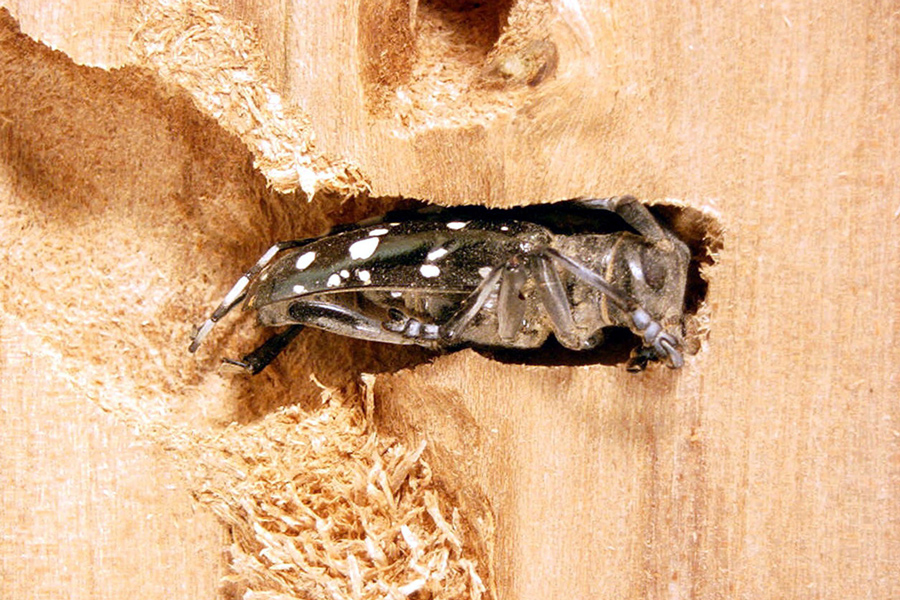
The Asian longhorned beetle is an invasive insect pest native to China and North and South Korea that threatens many hardwood trees in forests and landscapes in the United States. The pest is also referred to as the roundheaded borer because the segment below the head is round in shape.
William Hudson and Shimat Joseph
|
-
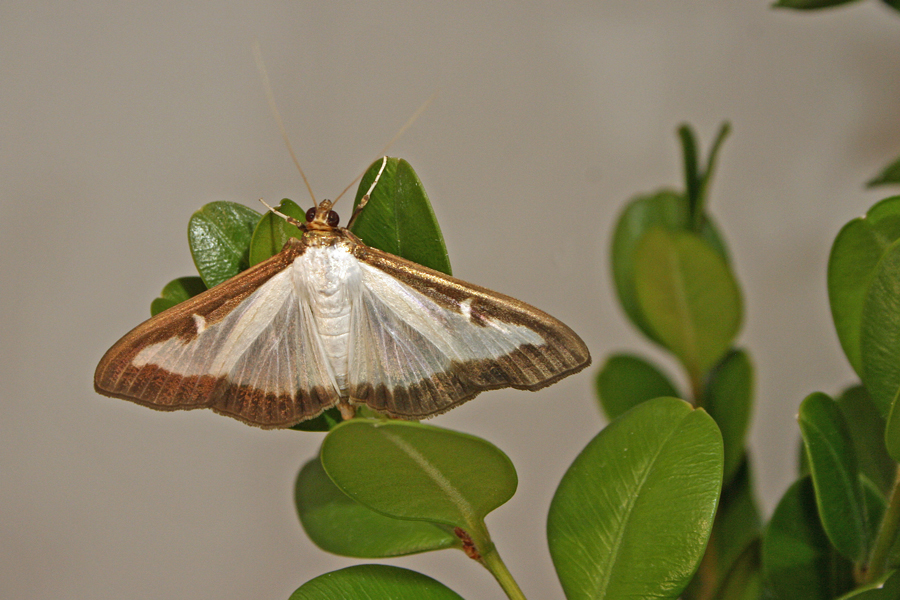
Box tree moth is an invasive pest of boxwood plants. It was introduced into New York in 2021 and has been reported in six other states. It has not been reported in Georgia yet. Boxwoods are an important ornamental evergreen shrub in the southeastern U.S., widely planted in residential, commercial, and public landscapes in both urban and suburban areas.
William Hudson and Shimat Joseph
|
-

Rose rosette virus can cause major problems for nurseries, landscapers, and gardeners alike. The virus causes the plants to become undesirable and will eventually result in the death of the plant, which affects all segments of the rose industry as well as rosarians and home gardeners. The symptoms of disease on ornamental roses are a yellow mosaic pattern appearing on leaves, increased thorniness, abnormally shaped foliage and early production of lateral buds that make up the witches’ broom. This publication is intended for rose producers and serious rose gardeners interested in technical details of this virus and a mite that transmits it.
Jean Williams-Woodward, William Hudson, Svoboda Pennisi, Shimat Joseph, and Alejandra Monterrosa
|
-
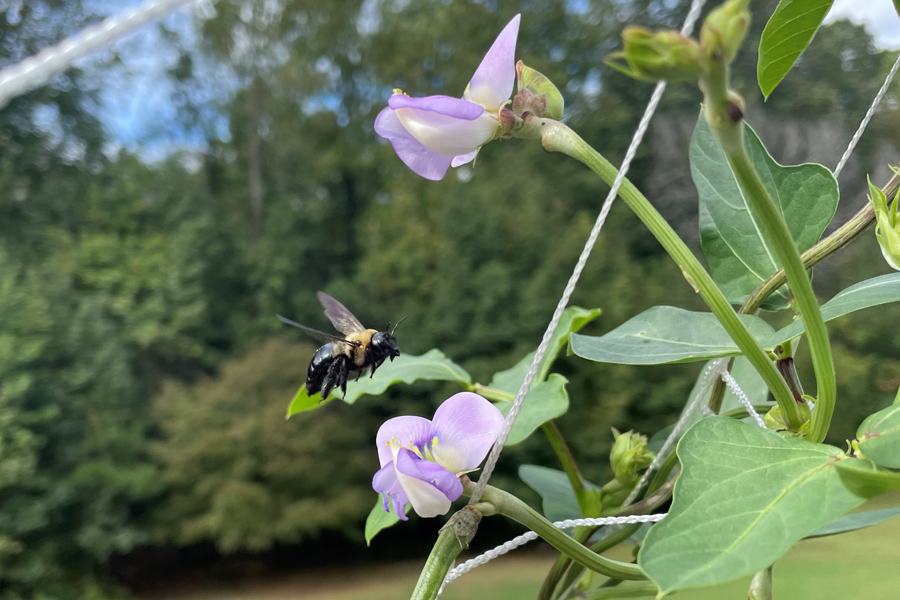
Carpenter bees can be a serious pest on outdoor structures made of wood, such as patios, decks, siding of homes, sheds, furniture, etc. The large carpenter bee is the most common species found in Georgia. While these bees are pollinators, mated females bore tunnels into wooden structures to raise their larvae. This tunneling causes substantial damage to wood, and sometimes even compromises the integrity of the structures they affect.
Shimat Joseph
|
-
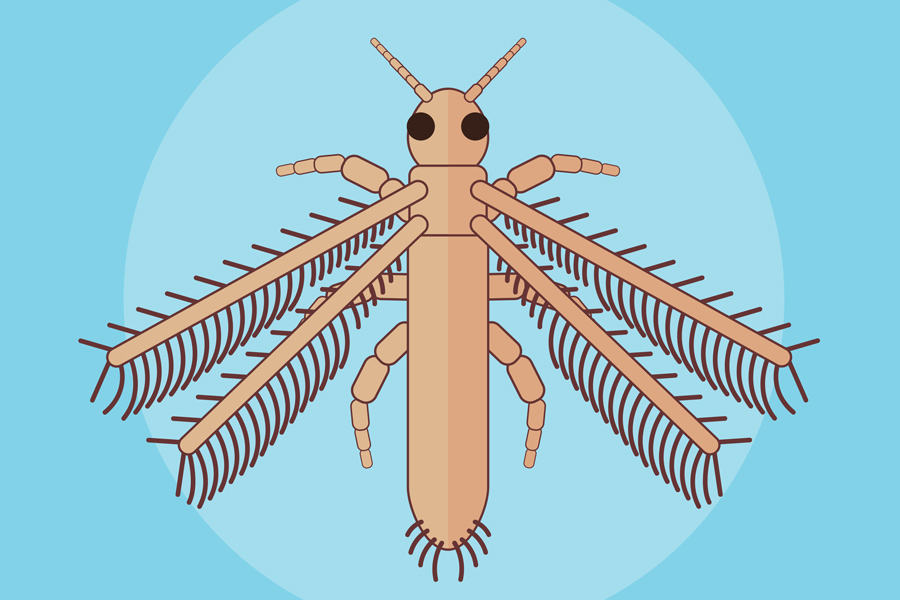
Thrips are tiny, cigar-shaped insects, with about 5000 known species, many of which cause damage to cultivated plants by feeding or spreading plant diseases. It is usually difficult to identify thrips species. Although they are winged, thrips are generally weak fliers, but they can be dispersed by wind and the transport of infested plant material. Some of the common thrips affecting landscape and nursery plants are described here.
William Hudson, Susan Braman, Shimat Joseph, and SHAKUNTHALA NAIR
|
-
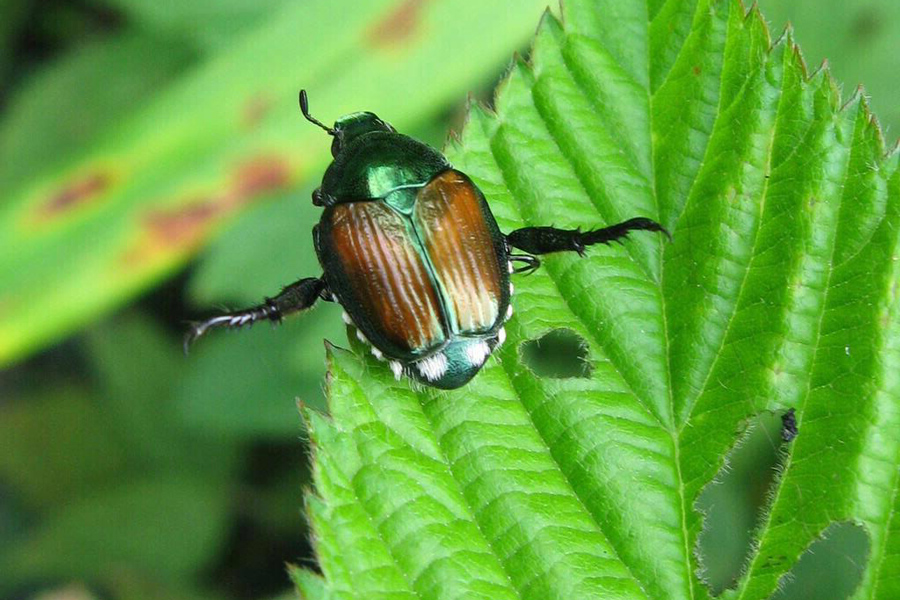
The Japanese beetle, as the name suggests, is native to Japan and was introduced to the U.S. through the transport of plant material. It is a highly devastating pest, attacking a variety of landscape and garden plants, fruit trees, field crops and turf. This circular provides an overview of Japanese beetles in the nursery and landscape, covering the biology, damage, monitoring, and management of this pest.
William Hudson, Susan Braman, Shimat Joseph, and SHAKUNTHALA NAIR
|